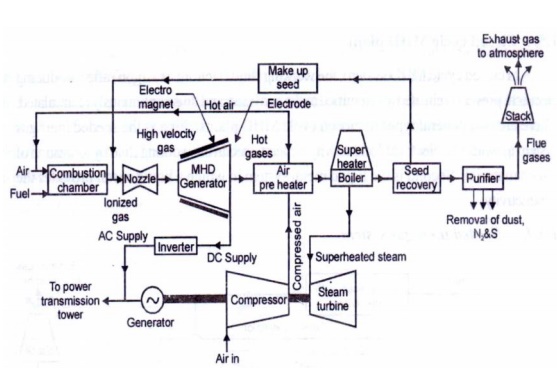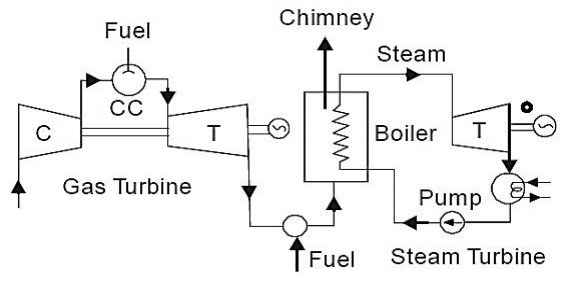Chapter: Mechanical and Electrical : Power Plant Engineering : Power Plants and Boilers
Combined Power Cycles

COMBINED POWER CYCLES
In electric power generation a combined
cycle is an assembly of heat engines that work in tandem off the same
source of heat, converting it into mechanical energy, which in turn usually
drives electrical generators. The principle is that the exhaust of one heat
engine is used as the heat source for another, thus extracting more useful
energy from the heat, increasing the system's overall efficiency. This works
because heat engines are only able to use a portion of the energy their fuel
generates (usually less than 50%).
The objective of this approach is
to use all of the heat energy in a power system at the different temperature
levels at which it becomes available to produce work, or steam, or the heating
of air or water, thereby rejecting a minimum of energy waste. The best approach
is the use of combined cycles. There may be various combinations of the
combined cycles depending upon the place or country requirements. Even nuclear
power plant may be used in the combined cycles.
GT-ST Combined Power plants
It has
been found that a considerable amount of heat energy goes as a waste with the
exhaust of the gas turbine. This energy must be utilized. The complete use of
the energy available to a system is called the total energy approach. The
remaining heat (e.g., hot exhaust fumes) from combustion is generally wasted.
Combining two or more thermodynamic cycle’s results
in improved overall efficiency, reducing fuel costs. In stationary power
plants, a successful, common combination is the Brayton cycle (in the
form of a turbine burning natural gas or synthesis gas from coal) and the Rankine
cycle (in the form of a steam power plant). Multiple stage turbine or steam
cylinders are also common.

ST-MHD
Combined Power plants

Related Topics